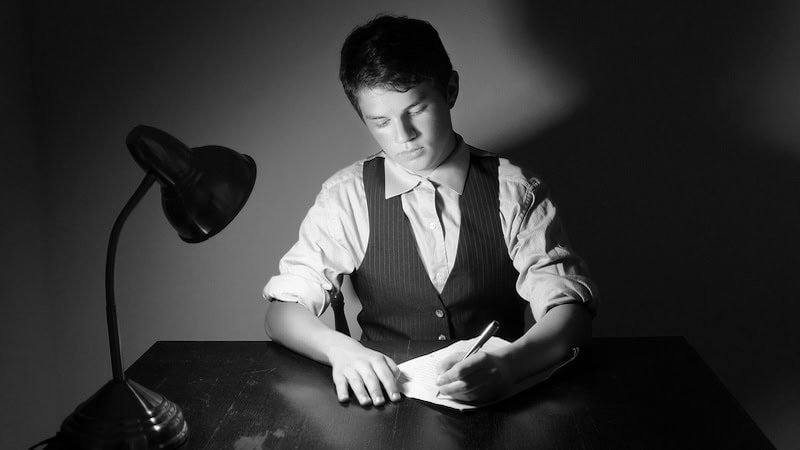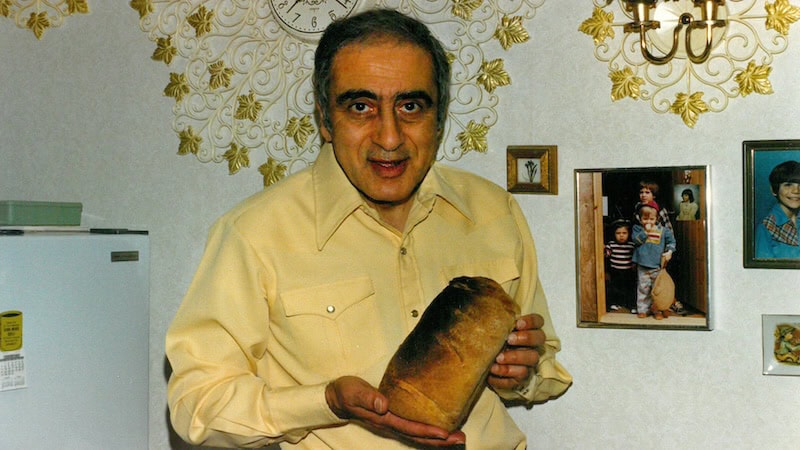The Writing Trade
Aspiring to make an honest living through honest work

Youthful inspirations can percolate from many springs, from family to accomplished strangers. Dale Davis found guidance for his aspirations to join the writing trade from both, including Earl Hamner, an author many baby boomers came to know through “The Waltons.”
People always asked me to name my favorite author. Was it Faulkner or Steinbeck? Was it Robert B. Parker or Stephen King? While I’ve never had a favorite author, one who inspired my work as a beginning writer was John-Boy Walton.
Yes, John-Boy from the television series “The Waltons,” which ran on CBS for nine seasons, starting in 1972. Each episode of that series featured a voice-over narration spoken by Earl Hamner Jr., the show’s creator and the author of “Spencer’s Mountain” and “The Homecoming,” novels based on his family and his growing up in Virginia during the Great Depression. Hamner’s comments were the closest I came to reading something John-Boy wrote.
The television movie adaptation of “The Homecoming” premiered before Christmas 1971 and introduced America to the Walton family. Hamner wrote the screenplay, so when John-Boy speaks of his hopes and dreams of becoming a writer, the dialogue rings with authenticity. We hear Earl Hamner remembering his own mixed-up feelings as he was learning “the writing trade,” as John-Boy’s father calls his dream near the conclusion of the movie.
We were close in age when I first watched the movie. I was 13; John-Boy is 15. He isn’t some mature, established writer. He is learning his craft. I was learning my craft, and I was learning that writing is hard work. What John-Boy says about becoming a writer made me aware of something that I had never been able to tell anyone.
During a confrontation with his mother midway through the movie, John-Boy reveals the writing tablet that he hides under his mattress. Telling her he wants to be a writer, he explains that writing helps him record “all my secret thoughts, how I feel, and what I think about.” This scene reflected my own experiences of writing in spiral notebooks. I hid my work from my family. I wrote for my classes at school, but those papers were homework. Writing in notebooks was different. That writing was deeply personal. I might record scenes I observed, some snippet of conversation, or my thoughts on people I knew.
The scene helped me understand how a beginning writer may feel to be part of a group, like one’s family, and yet an outsider at the same time. We observe the lives of others and reveal truths about them that they don’t see. We guard what we write, uncertain how others will react.
Near the conclusion of the movie, John-Boy’s father returns home, bearing a sack of gifts that he claims he wrestled from Santa. When John Boy opens his present and finds a stack of Big Chief writing tablets, his father askes him, “I wonder how word got all the way to the North Pole that you wanted to be a writer?” How did he know John Boy wrote in journals and wanted to be a writer? Hamner never explains, and I’m glad. Part of John-Boy’s frustration throughout the movie is his fear that he will disappoint his father if he pursues his dream to become a writer. Times are hard, and money is lean, and John-Boy worries that being a writer won’t provide him a living. That this father knew of his son’s dream and provided him the perfect gift, the tools of the writing trade, is touching and makes us wonder at the wisdom of parents.
What’s important is the love John Walton feels for his son. He encourages John-Boy to pursue those dreams rather than resign himself to jobs that only earn him money. “I don’t know a thing about the writing trade, son,” he tells John-Boy, “but if you want to take it up, you’ve got to give it your best.” A parent’s blessing: go as far as you can and work as hard as you can to get there. John Walton’s advice echoed my parents’ accepting my decision to study journalism in college. They read newspapers and respected newspapers, and they believed writing for newspapers was an honorable trade.
That phrase “the writing trade” also helped me appreciate Hamner’s skill as a craftsman. John-Boy’s father doesn’t say “the writing profession” or simply “writing”; he sees writing as a trade where one makes an honest living through honest work. John-Boy and I recorded our thoughts and ideas in tablets and spiral notebooks, but if we were serious about making a living from writing, we had to learn everything about the work of writing.
Over the years I studied the works of many writers, but their polished stories left out one important lesson: how does one become a writer? John-Boy Walton taught me that the writing trade started with the beginning writer scribbling in the pages of a tablet, and from those pages the beginning writer learns to construct stories that entertain and inform and enlighten others.
Dale Davis retired from teaching in the community college system but he has no plans to retire from writing. His article “That’s Not in the Guidebook” was published in Boomer Magazine. He also published “Richie Brockelman and His AmericanDream” in Mystery Tribune.
Read more childhood memories and other contributions from Boomer readers in our From the Reader department.
Have your own stories you’d like to share with our baby boomer audience? View our writers’ guidelines and e-mail our editor at Annie@BoomerMagazine.com with the subject line “‘From Our Readers’ inquiry.”



